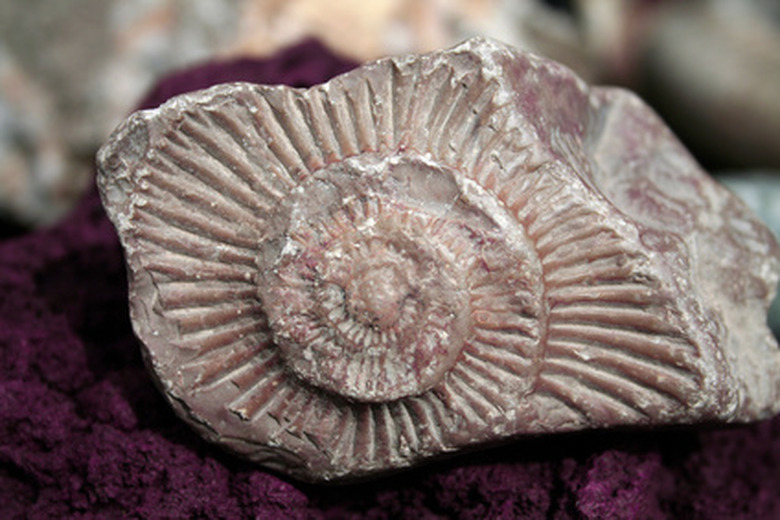Fossil Hunting In Idaho
Idaho fossil beds contain late Pliocene and Pleistocene fossils – the most recent period of mammals. During the Paleozoic Era, 230 million years ago, Idaho was a shallow sea, and the Paleozoic fossils discovered in Idaho include trilobites, crinoids, sea stars, ammonites and sharks.
Although fossil hunting in Idaho is not as prolific as in the state of Montana, several small dinosaurs were uncovered along the eastern Idaho-Wyoming border. The best-known fossil discovery of Idaho is that of the Hagerman horse – the state fossil of Idaho.
If you're looking to collect fossils you find yourself, remember: you can't collect fossils in Idaho without a permit. But if you're hoping for an outdoor adventure, here's where to head to get a glimpse at Idaho's ancient history.
Hagerman Fossil Beds National Monument
Hagerman Fossil Beds National Monument
Considered one of the most valuable fossil beds due to the completeness of fossils found, the Hagerman horse quarry area was once a large freshwater lake (Lake Idaho) where animals congregated for food and water. Examination of fossil evidence indicates the climate and vegetation evolved from a warm, humid region to a high-desert plateau.
Deemed a national park, the Hagerman Fossil Beds National Monument – including the Hagerman horse quarry area – is maintained by the United States National Park Service. A visitor's center, a few isolated trails and viewpoints offer visitors several educational interests as well as learning courses, college credit programs and staff guided tours into safe areas of the quarry.
Unlike other national parks, the Hagerman Monument is a learning center for paleontological research and education. Over 40,000 fossil specimens have been recovered and restored with many on display in museums throughout the country. The area is closed to the public due to hazardous landslide conditions; however, these landslides expose thousands of fossils every year, keeping the monument staff busy digging and protecting new finds.
Clarkia Fossil Formation
Clarkia Fossil Formation
In Clarkia, Idaho, 15 million-year-old fossil beds contain the remains of plants and animals. Prehistoric Clarkia offered a similar climate and ecology similar to modern Florida. Anoxic conditions slowed decomposition of prehistoric organisms, allowing preservation of the organisms' soft tissue – normally absent from the fossil record.
Fossils with the organic matter intact are called compression fossils. Original cell walls are retained and visible under a microscope. Compression fossils reside in deep layers of rock, far from air and oxygen exposure.
This extensive collection of compression fossils allows scientists to conduct detailed studies of ancient plants (the study of ancient plants is called paleobotany) and climates. Clarkia contains exceptionally well-preserved specimens of insects, fish and leaves, including the Bald cypress and Dawn redwood. The Clarkia Fossil Bowl is open in summer for public digging.
Oviatt Creek Fossil Beds
Oviatt Creek Fossil Beds
Located about 50 miles east of Moscow, Idaho, southwest of the Elk River, the Oviatt Creek fossil beds are easily accessible by car (in good weather). Many fossils are visible at the surface; however, exposure to air and oxygen cause the specimen details to deteriorate. Oviatt Creek fossils contain different types of ancient plant matter – including leaves, stems, seeds and conifer cones – and even insects.
Minnetonka Cave
Minnetonka Cave
Located west of St. Charles is the largest limestone cave in Idaho, Minnetonka Cave. Ninety-minute tours take you through nine separate chambers filled with fantastic formations and fossils of preserved tropical plants and marine life; however, collection of fossils is prohibited in the cave.
Developed by the federal government in 1930 via the Works Progress Administration, interior paths, steps, trails and railings were installed. The United States Forest Service, as part of the Cache National Forest, manages Minnetonka Cave.
Fossil Collecting In Idaho
Fossil Collecting In Idaho
Because of their archeological importance, fossils may not be collected without a permit. For more information on current fossil hunting regulations in Idaho, contact the Idaho Chamber of Commerce.
Cite This Article
MLA
Parrott, Suzanne Fyhrie. "Fossil Hunting In Idaho" sciencing.com, https://www.sciencing.com/fossil-hunting-idaho-6165572/. 30 September 2021.
APA
Parrott, Suzanne Fyhrie. (2021, September 30). Fossil Hunting In Idaho. sciencing.com. Retrieved from https://www.sciencing.com/fossil-hunting-idaho-6165572/
Chicago
Parrott, Suzanne Fyhrie. Fossil Hunting In Idaho last modified August 30, 2022. https://www.sciencing.com/fossil-hunting-idaho-6165572/
